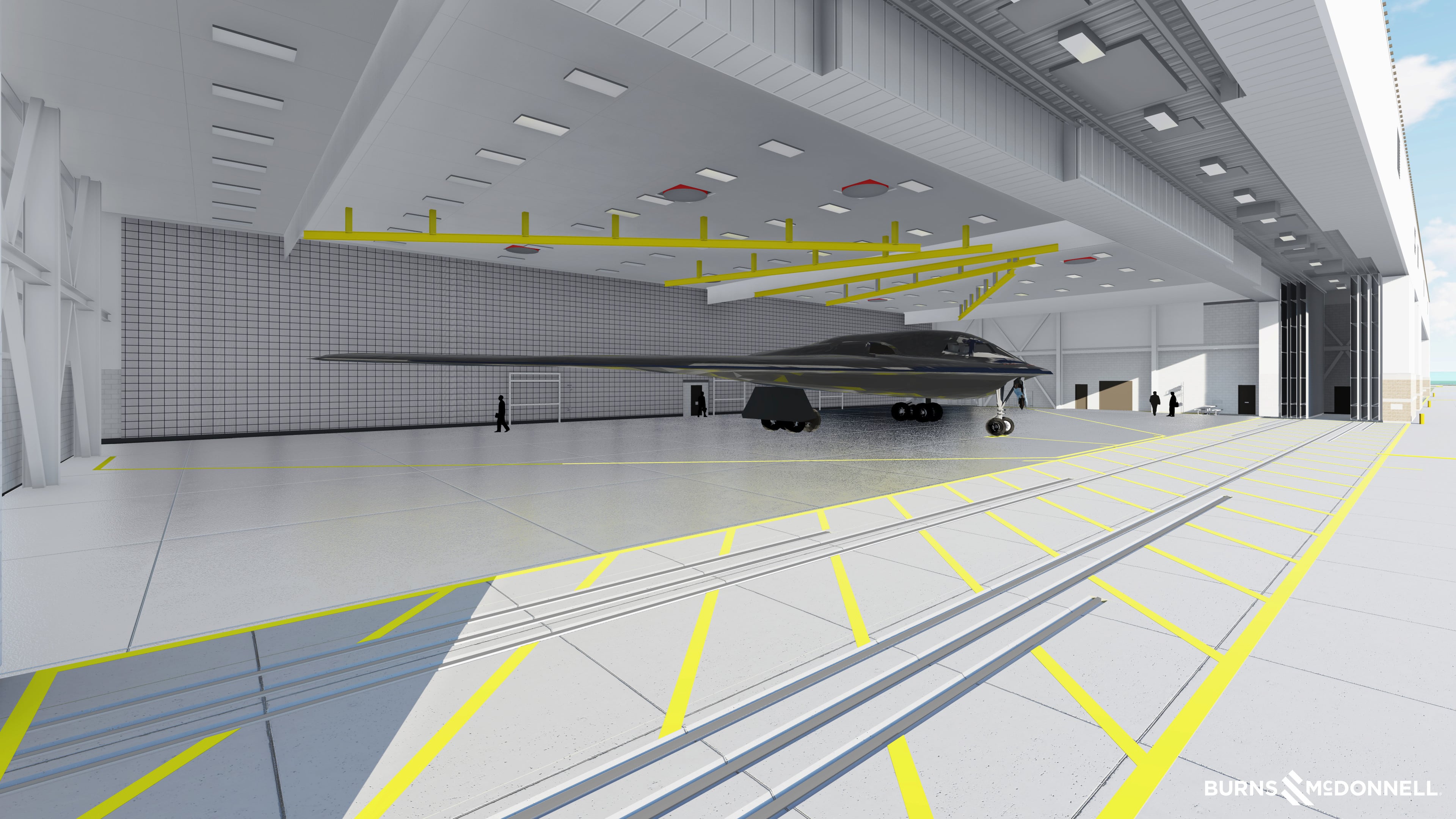The Air Force’s B-21 Raider program has started testing out temporary prototypes of the Environmental Protection Shelter at Ellsworth Air Force Base in South Dakota — the preferred location for the service’s first out of three B-21 main operating bases.
The Air Force completed a B-21 Raider Environmental Protection Shelter prototype at Ellsworth on Feb. 26, and is moving ahead testing out multiple models to determine the best and most cost-effective options that could be used at the main operating bases along with other locations. The shelters will supplement the maintenance hangars at each of the main operating bases, the Air Force said.
“Environmental Protection Shelters help extend the life of the aircraft and reduce required maintenance by limiting UV exposure, limiting snow accumulation and melt, and limiting icing/de-icing operations experienced by the aircraft over time,” Col. Derek Oakley, AFGSC’s B-21 Integration and System Management Office director, said in an Air Force news release.
“These shelters also help us generate sorties more quickly by eliminating the need to always have to move aircraft in and out of hangars,” Oakley said.
RELATED

Ellsworth was selected as the test site for the shelters over the other potential main operating bases, due to the weather conditions that allowed a more broad range of data collection.
“We will collect a few years of data on these shelters and then incorporate that data into the final Environmental Protection Shelter design,” Oakley said.
Ellsworth, along with Whiteman Air Force Base in Missouri and Dyess Air Force Base in Texas, have been tapped as the preferred locations for the B-21 operating bases, although Ellsworth is the top choice for the first location. An announcement finalizing which location will become the first is expected in the summer, pending the National Environmental Protection Act process.
Once the first location is named, construction there will launch and a second National Environmental Protection Act process will get underway by 2022 to determine the order of the subsequent main operating bases.
The Air Force has already given the green light to purchase at least 100 B-21s. But that number could ultimately reach more than 220, based on comments from officials including Air Force Global Strike Command commander Gen. Timothy Ray about the service’s future bomber requirements.
Meanwhile, Air Force Rapid Capabilities Office director Randall Walden told Air Force Magazine he expects the B-21′s first flight to take place sometime in mid-2022.
Defense News reporter Valerie Insinna contributed to this report.





